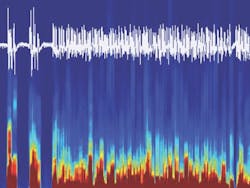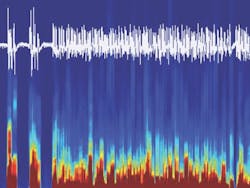Optogenetics discovers selective brain circuit important for the recovery of consciousness
Scientists at the University of Bern (Switzerland) and collaborators used optogenetics to discover the mechanism responsible for rapid arousal from sleep and anesthesia in the brain. The results of their study suggest new strategies for medical treatment of sleep disorders and recovery of consciousness in vegetative states.
Related: Researchers use optogenetics to trigger REM sleep in mice
The quantity and the quality of sleep are now considered as an early marker of many neurological disorders, including Alzheimer's disease, Parkinson's disease, and schizophrenia. Unfortunately, pharmaceutical strategies combined with improved life hygiene have limited effect. Personalized medicine strategies for the treatment of either insufficient sleep quality or quantity are missing. Therefore, intensive experimental research is conducted to understand how brain circuits control sleep-wake cycle and consciousness. So Prof. Antoine Adamantidis from the Department of Clinical Research of the University of Bern and Department of Neurology at the Bern University Hospital, together with fellow researcher Carolina Gutierrez Herrera and colleagues from Germany, identified a new circuit in the brain of mice whose activation causes rapid wakefulness while its inhibition deepens sleep.
Mammalian sleep is classically divided in two phases, including non-rapid eye movement (NREM) sleep or light sleep, and REM (or paradoxical) sleep or deep/dreaming sleep. Key brain circuits for those two states have been identified. However, the precise underlying mechanisms—such as the onset, maintenance, and termination of sleep and dreaming—remain unknown.
Adamantidis and Gutierrez Herrera identified a new neural circuit between the hypothalamus and thalamus, which have been associated with electroencephalogram (EEG) rhythms during sleep. The activation of this circuit signals the termination of light sleep: using optogenetics, the researchers made neurons from the hypothalamus controllable with millisecond-timescale light pulses and showed that their transient activation during light sleep induced rapid awakenings, while their chronic activation maintains prolonged wakefulness. In contrast, optogenetic silencing of this circuit stabilizes light sleep and increases its intensity. In a translational analogy, hyperactivity of this circuit may cause insomnia, while its hypoactivity could be responsible for hypersomnia, making it a new therapeutical target for sleep disorders.
Interestingly, the arousal power of this circuit is so strong that its activation precipitates emergence from anesthesia and the recovery of consciousness. "This is an exciting discovery since therapeutical approaches to recover from a vegetative or minimally conscious state are quite limited," Adamantidis says. Non-selective deep brain electrical stimulation has been used with some success, but the underlying brain mechanisms remain unclear. In this study, Adamantidis, Gutierrez Herrera, and collaborators nailed down a selective brain circuit important for the recovery of consciousness.
The findings shed light on the brain mechanism of arousal, open a new door for tailored medical treatment of sleep perturbances, and provide a roadmap for arousing patients from a vegetative or minimally conscious state. But Adamantidis emphasizes that it will take some time before novel therapeutical strategies will be designed based on their results.
Full details of the work appear in the journal Nature Neuroscience; for more information, please visit http://dx.doi.org/10.1038/nn.4209.
Follow us on Twitter, 'like' us on Facebook, connect with us on Google+, and join our group on LinkedIn

